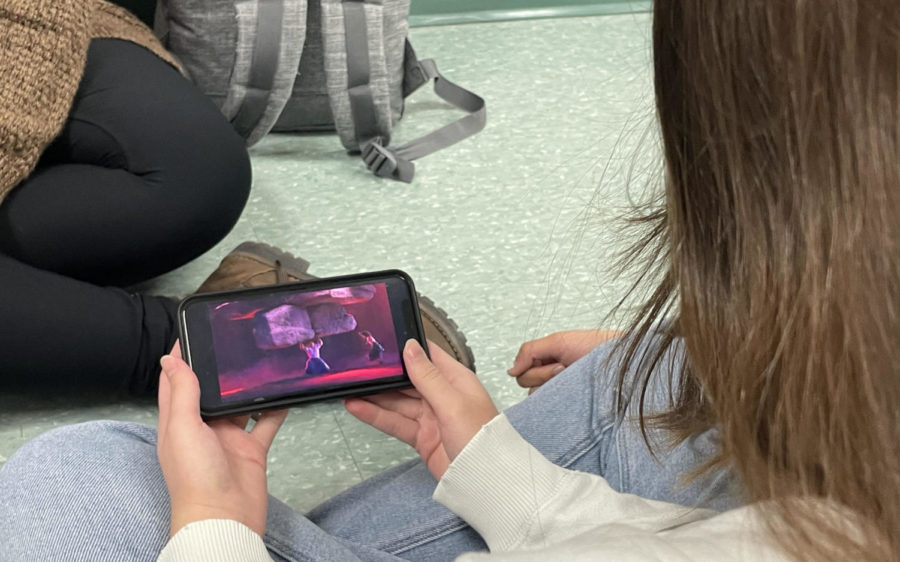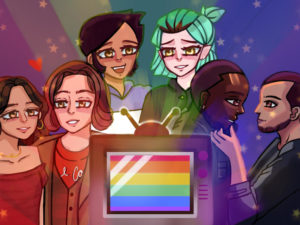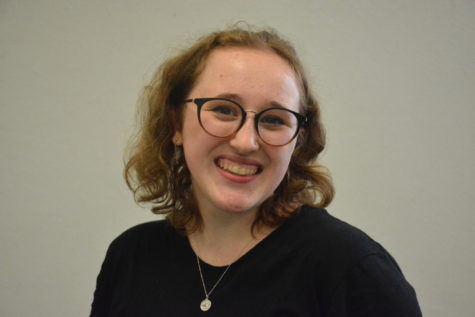Female representation in media evolves
Junior Anna Dimaiuta watches Disney’s “Encanto” on March 2 before first period starts. “Encanto” has been recognized as one of the very diverse animated movies Disney has produced.
March 24, 2022
After coming home from school, junior Anushka Chivaluri turns on the television to watch her favorite Disney movie: “The Incredibles.” Looking into the light of the television, she sees her favorite character, a strong woman who stretches lengths to save her city but is not afraid to cry when times are tough. “I want to be like her,” she thinks.
Women have a long history of being typecast as damsels-in-distress in media. As early as the 1930s, cartoon women like Betty Boop and Olive Oyl have been portrayed as weak and helpless, often waiting for the heroic male character to come save them.
“Animation specifically tends to stereotype women in order to access a broader audience,” Chivaluri said. “[Some] characters are created to be a laughingstock by making them have unfavorable characteristics, like [being] wider than others and not having the most symmetrical faces.”
Lack of representation of women in film does not stop at the camera-level. A 2007-2021 study of under-represented groups within the film industry shows that of the 1,542 top-grossing films over that 14-year timeframe, only 83 of those films were directed by women. The same study also states that 8.9% of the Best Director nominees were women.
One way people often measure the representation of women in film is by using the Bechdel Test. This test takes into account how many female characters are seen on screen, the amount of dialogue they receive and if that dialogue pertains only to men. This test is also used to determine if a female character falls under the “male gaze,” the concept that women should only portray themselves as sexual objects for the benefit of men.
“A lot of the time, female directors make it so [their media] passes the Bechdel Test while male directors usually just focus on the male gaze,” junior Maddy Rhyner said. “Female directors make a very human version of women, while men put women on an unachievable pedestal, and it’s not fair to us.”
As society has progressed, so has film’s representation of female characters. With the release of Disney’s “Encanto” in November 2021, people have praised the different characters and representation that they bring with them. One often mentioned character is Luisa, the strong daughter of the family who can literally move mountains, but struggles not to succumb to the pressure she feels from her community and her family. She is able to use her strength to help others while still expressing her femininity.
“[Luisa] is just so different from all the other female characters because she feels like an actual person,” junior Anna Dimaiuta said. “She’s not photoshopped into being the ideal female character. [Good female characters] show that girls can be strong and independent while also being kind of girly. There are so many possibilities for younger girls, and they shouldn’t be limited by what other people tell them.”
With the push for better represented women, young girls can look forward to films and television series that portray the endless qualities of different women. Current praised female characters, like Hermione Granger of the “Harry Potter” franchise, Katniss Everdeen from “The Hunger Games” and Beth Harmon from “The Queen’s Gambit,” act as role models because of their intelligence, bravery and sense of humor that younger people could relate to. The abundance of possibilities for the portrayal of women has just begun to be recognized.
“We all grew up with Barbies, and we were unconsciously taught that Barbies were perfect, and that was what you want to be,” Chivaluri said. “We were conditioned to think that that’s the norm. I want the media to accept the flaws of women rather than try to cover them up. I want them to be portrayed to have character growth and accept their flaws but not have to change for anyone or fit into narrow, esoteric standards.”






